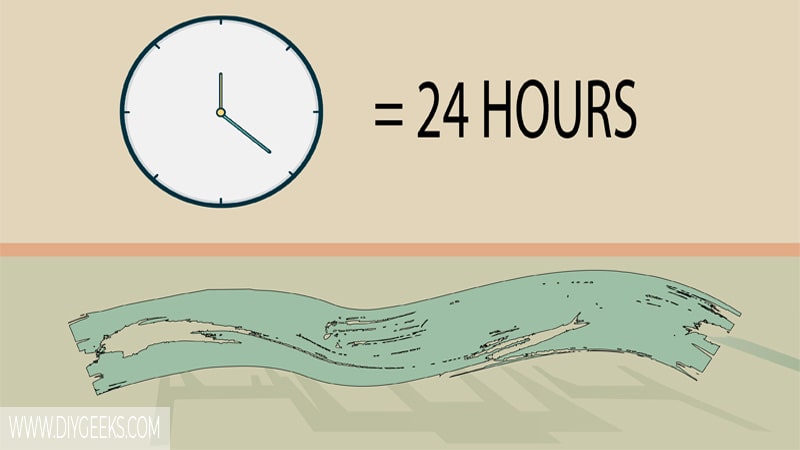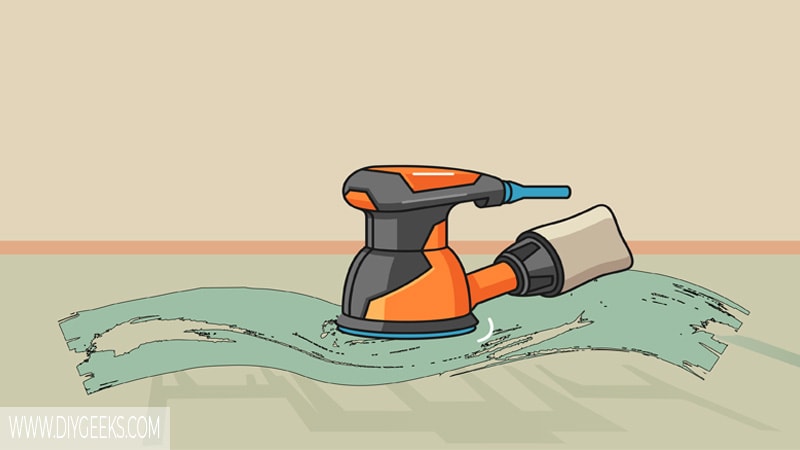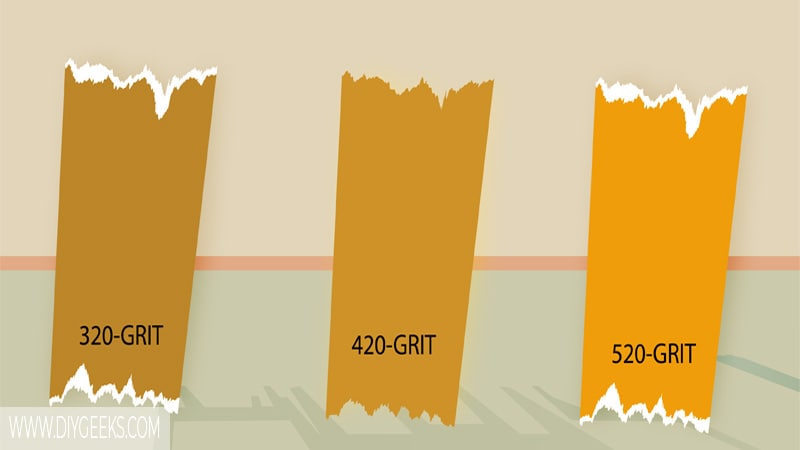Sanding wood stain refers to the process of using a sandpaper (or power sander) to smooth the top layer of a stained surface. It’s done to remove imperfections and dirt from the surface or to prepare it for additional coats.
Sanding between coats of stain isn’t necessary, but it’s recommended. It helps wood start to adhere better and create a smooth finish.
You must sand between water-based wood coats as it raises the wood grain and causes surface bumps. You must sand before and between coats of stain, but you don’t need to sand the final coat.
How Long Must Wood Stain Dry Before Sanding It?

Water-based wood stain takes less than 30 minutes to dry while oil-based wood stain takes more than one (1) hour to dry enough for sanding.
Water-based wood stain dries faster than oil-based stain because it uses water as its solvent, and water evaporates faster than oil.
If you sand too soon, you will ruin the finish because the coating is still wet, the particles haven’t hardened yet, so the coating will be sticky and wet. Once you use sandpaper over it, you will remove most of the stain and create a messy finish.
Use the sandpaper trick to know if the coating is dry enough. Swipe fine-grit sandpaper over the stain — if it gets clogged while sanding, the coating isn’t dry enough. If it moves smoothly over the coating, the coating is dry.
Do You Need Sand Between Oil-based Wood Stain Coats?
You need to sand between coats of oil-based stain to improve the adhesion and remove the accumulated dust.
The oil-based wood stain has a long dry time as it uses synthetic or natural oil as its main solvent (or carrier). Since its coating takes too long to dry, it can accumulate too much dirt or debris that can prevent the next coating from adhering if you don’t sand.
Sanding becomes necessary if you take too long to apply the next coat. While the existing coat is drying, dust and debris will settle over it. The additional coating won’t adhere if you don’t sand the existing coating that is filled with dust.
Do You Need to Sand Between Water-based Wood Stain Coats?
You need to sand between water-based wood stain coats as the finish will raise the wood fibers if you don’t. The raised wood fibers will become splinters and create bumps on the surface. These bumps will prevent the additional coating from adhering.
Water-based stain is thin, so the raised wood fiber will affect its finish more (it will be more visible). Sanding removes bumps from the surface and leaves a smooth finish behind for the next coatings to adhere.
Related Read: How To Apply Stain With a Roller?
Do You Need to Sand The Final Wood Stain Coating?

You don’t need to sand the final wood stain coating as you can damage and ruin the finish color. The final coating gives the wood a unique color and beautifies it.
Sanding between coats is done to improve the adhesion between coatings and create a smooth finish. You don’t need to sand the final coating of the wood stain as you won’t apply additional coatings over it.
Since there’s no need to improve the adhesion, there’s no need to sand the final coating. Sanding the final coating will produce dust and blur, scratch, and damage the smoothness of the finish.
The produced dust will make the finish blurry (or cloudy), especially clear stains. Eventually, you’ll be left with an amateurish finish.
What Happens If You Don’t Sand Between Coats of Wood Stain?
If you don’t sand between coats of wood stain, the new coat won’t adhere properly and the finish won’t be smooth or clear because the dust nibs, splinters, and debris will affect the quality of the finish.
Dust, debris, and splinters settle and dry over the existing coating, making it difficult to have a smooth and perfectly bonded finish. This is why it’s required to sand lightly between coats, regardless of the type.
What Sandpaper Grit To Use Between Wood Stain Coats?

Use fine-grit sandpaper (220-grit or higher) between wood stain coats as it removes surface imperfections, dust, and debris, without affecting the finish.
Don’t use coarse or medium-grit sandpaper (40/150-grit) as they remove the coating instead of smoothing it out.
What Sandpaper To Use Before Staining Wood?
Before staining wood, use medium-grit sandpaper (100-grit) to remove imperfections, bumps, and dirt, and make the surface paint-ready.
Most wood furniture are riddled with glue, pencil marks, and nail holes that aren’t easily removed and will affect the quality of the finish. Fine-grit sandpaper isn’t strong (or rough) enough to remove these imperfections, so use medium-grit sandpaper.
You can use fine-grit sandpaper before staining wood, if the surface is smooth, clean, and doesn’t have imperfections.
Tip: Sand in the direction of the wood grain.


